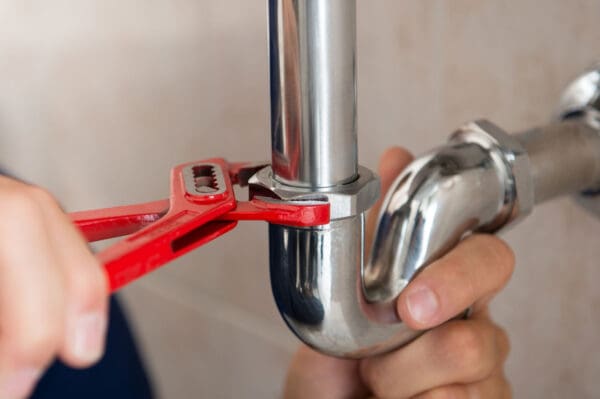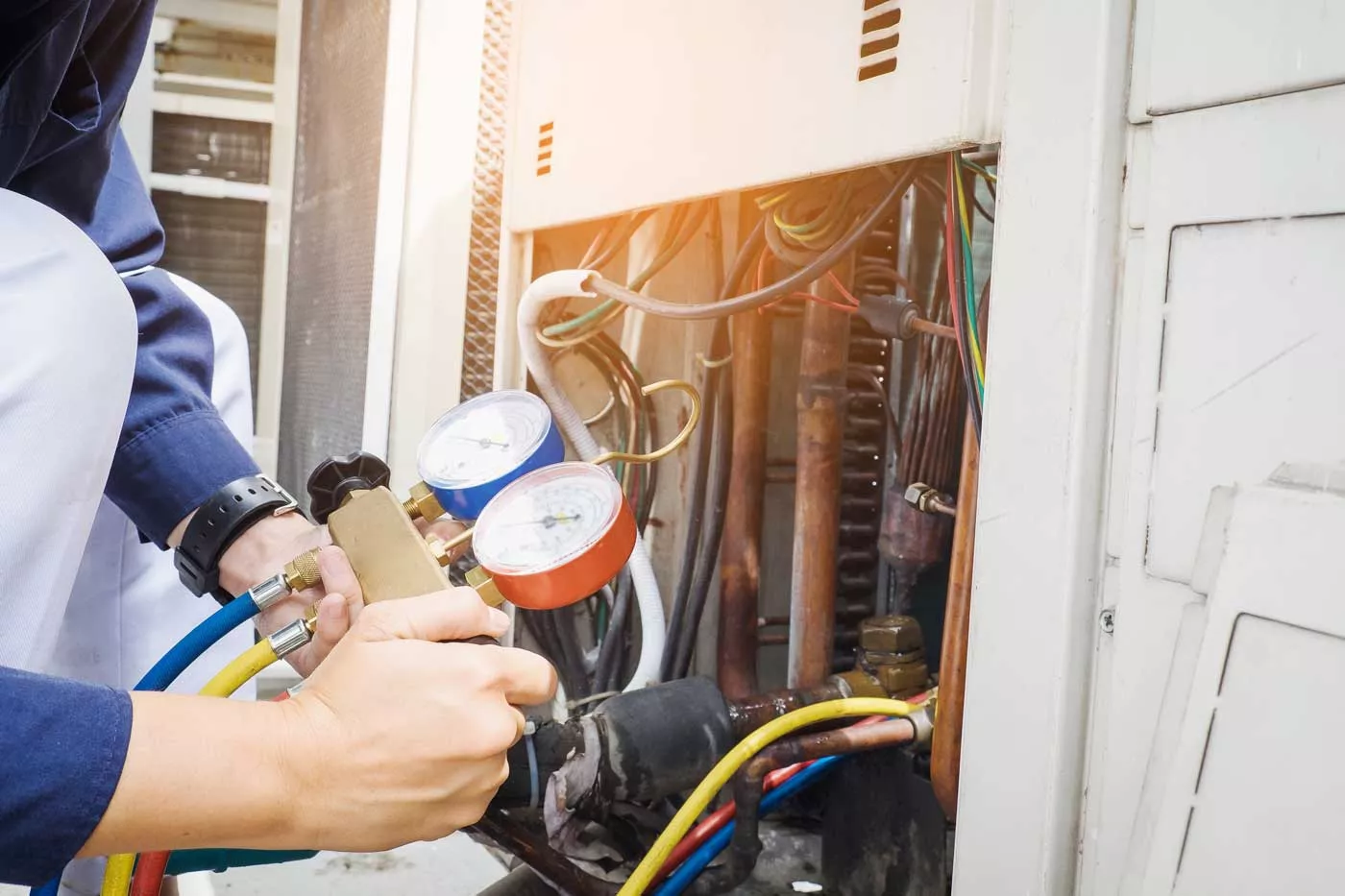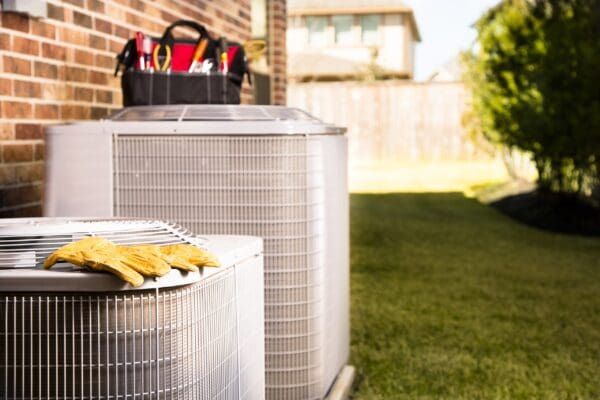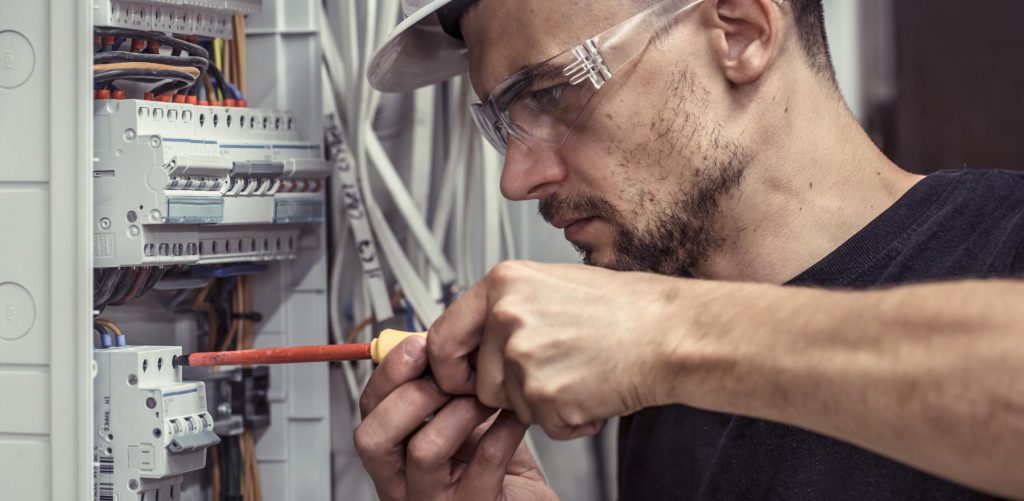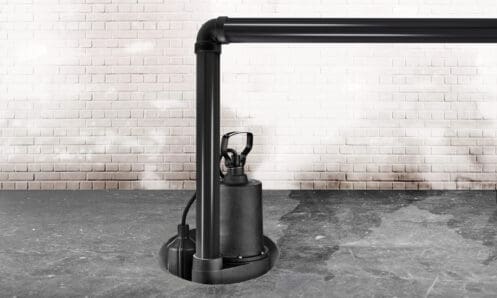
A sump pump is the primary line of defense for preventing a home’s basement or crawlspace from flooding. With a sump pump, water that enters your home through the foundation will instead flow into the sump basin or pit. This then triggers the pump to start running and pumping the water away from the house. However, sump pumps don’t always run when they should, which is why we recommend investing in a battery backup for your home.
How a Sump Pump Battery Backup Works
The primary power source for most sump pumps is the building’s electrical system> This ensures that the pump will have a steady source of electricity. However, there is always a chance that a severe storm could knock out the power to your house and prevent your sump pump from running when needed. This is where adding a battery backup comes in handy.
A battery backup typically consists of two main components: a controller or monitor and a 12-volt battery. The controller monitors whether electricity is still flowing to the circuit where the sump is located. If the power goes out, the controller will automatically switch over to the battery.
There is also another option in terms of a battery backup that is typically even more failproof. This is to have a primary sump pump that is powered and a backup pump that is only battery-powered. With this type of system, you usually put both submersible pumps in the same sump basin. If there isn’t sufficient space, you can also have one submersible pump in the basin and then a backup pedestal pump on top of the basin.
This type of system typically uses a water sensor that’s placed towards the top of the basin. If the water level rises to where the sensor is, the sensor will then trigger the backup battery pump to run. The other option is to just set the float switch for the backup pump higher in the basin so that this pump still gets triggered to run when the water level starts getting too high. The reason that this type of backup system is more failproof is that the most common reason a sump pump won’t prevent flooding is because the pump fails, not because the power is out. With this type of system, you’ll be protected and hopefully ensure your basement or crawlspace doesn’t flood should your power go out or your primary pump fail or not work effectively enough.
Why a Smart Sump Pump System Is Also a Great Investment
In addition to a battery backup or a backup battery pump, you may also want to consider investing in a smart sump pump monitor. There are two different types of smart sump pump monitors you can use, depending on whether you have just a primary pump or a system with a backup pump. The most basic option is to just mount a Wi-Fi-enabled water sensor toward the top of the sump basin. If your pump fails or isn’t working effectively enough, the sensor will send an alert to your smartphone.
The more effective option is to install a sump pump system with a primary pump, battery backup pump and smart monitor. In this case, the backup pump should ensure that your home doesn’t flood, and you’ll also receive a notification that your main pump failed so that you know it needs to be repaired or replaced.
Another advantage of a smart sump pump system is that you can use its app to view information about your sump pump. For instance, you can set it so that you receive an alert any time your sump pump runs so that you can then check to make sure it is working effectively enough to prevent flooding. You can also check how often and how long your sump pump runs to ensure it is working properly.
A smart monitor gives additional information like the number of gallons of water that are going through your home foundation per week, month or year. This can help you share information about the level and seasonality of rain or groundwater if you decide to manage some of the incoming water through external drainage.
If your sump pump is sufficiently large, it will normally take less than a minute until it empties the basin and shuts off. If the pump runs much longer each time it comes on, it indicates that it is inefficient or too small. A sump pump that runs longer puts the motor at risk of overheating. You also don’t want the pump to constantly cycle on and off since this can also lead to overheating.
Most sump pumps have a thermal protection or thermal relay switch that will trip and shut the pump off if it gets too hot. When this happens, it will often result in flooding since the pump needs to cool down before the thermal relay will reset and the pump will start running again. An even more serious issue is that overheating can cause a sump pump’s motor to burn out, in which case you’ll need to install a new pump.
How to Ensure Your Sump Pump Works Properly
A battery backup and smart sump pump monitor are effective options for decreasing the risk of flooding. Nonetheless, it’s also important that you regularly test your sump pump (and backup pump if you have one) and ensure that your pump is properly maintained. If you have a primary pump, all you need to do is fill the basin with enough water that the float triggers it to start running. If you prefer, you can lift the float switch to see if the sump will start.
If you wish to check the efficiency of your sump, unplug it and fill the basin almost to the top. You can then plug the pump back in and see how long it takes to empty the basin. If you have a backup pump, you’ll need to unhook it from the battery before unplugging and testing the primary pump. You can also test your backup pump by unplugging the primary pump to see if the backup runs and pumps effectively.
Maintaining a sump pump mostly involves occasionally cleaning the intake filter and checking the unit for signs of rust and damage. It’s also a good idea to clean out the basin a few times a year. This helps to prevent the filter from clogging or debris from getting sucked inside the pump.
If you want to install a sump pump in your home or a battery backup, the team at First Choice Plumbing, Heating, Air Conditioning & Electrical is ready to help. We’ve been serving the Metuchen area for over 20 years and are the company to turn to if you need any plumbing, heating or air conditioning services. For more information on your battery backup options or to schedule an appointment, contact us today.

